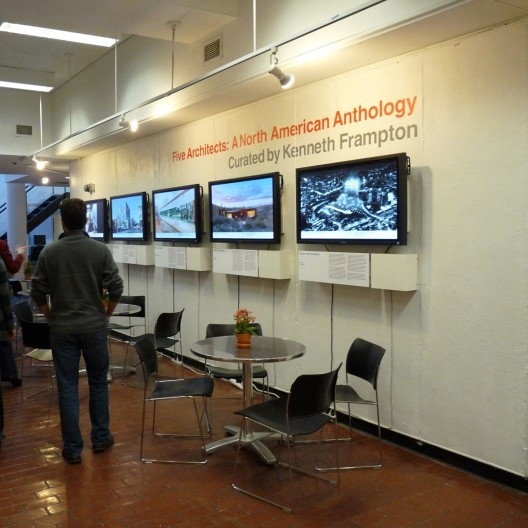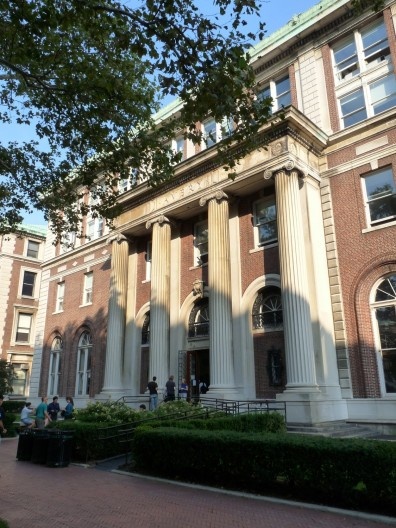
Five Architects: A North American Anthology, seminário realizado na Universidade de Columbia
Foto Nicolás Sica Palermo
NS: You've been a professor at Columbia University since 1972 and had previous experience teaching at Princeton University. You have also taught at several other schools in the United States. What are you teaching at Columbia University (7) at the present time?
KF: As I have already indicated I am currently involved with giving a seminar featuring non-Eurocentric architects. Last semester I gave a seminar on Constructivism in Europe from 1915 to 1938 covering the evolution of this sensibility in Russia, the Netherlands and Czechoslovakia. I shall give my standard lecture on the Modern Movement in the Spring, circa 1920 – 1960. From time to time I also give a course structured about the theme of tectonics; where the main reading is my book Studies in Tectonic Culture.
NS: Since you began to today, how has teaching has changed in the United States? I am talking about how the courses are structured, how the Architectonical Project is approached, how long the degree course is, etc. Is it possible to distinguish lines of thought in the main schools of the country? What would these lines of thought be (if they do exist)?
KF: The main academic program in the Graduate School of Architecture, Planning and Preservation at Columbia is the three-year M. Arch program. Despite the fact that I am still teaching in the GSAPP I have to confess that I have rather lost touch with the overall curriculum of the M. Arch degree program particularly as far as studio instruction is concerned. When I was acting chairman of the school, just prior to Bernard Tschumi’s appointment as dean some twenty years ago, the three year studio curriculum was more or less typologically based, particularly in the second and third years, passing from a housing studio in the Fall semester of the second year to a public building in the Spring, followed by a stadium in the first semester of the third year. Tschumi would be one of the first deans in the country to introduce digital design in the studios, in his so called “paperless studios” which, ironically, as you might imagine even increased the consumption of paper. However the introduction of the digital facilitated the deconstructivist fashion in architecture and also the subsequent influence of Greg Lynn’s ‘blob’ subculture. The production of studios in Columbia is beginning to recover from these formalist fads, but it is difficult to foresee how American architectural education will develop, particularly when the relationship of the architectural profession to the society is so unclear. In an epoch which is totally overwhelmed by consumerism it is hard to arrive at a significant environmental culture. Hence it is difficult to tell what are the main lines of thought in the various schools across the country.

Avery Hall, Columbia University, Nova York
Foto Nicolás Sica Palermo
NS: How is the Architecture course at the GSAPP structured? How important is the subject of Architectural Projects? What are, in general, the basic aspects covered in these subjects? I mean the importance of the theory of architecture, the construction techniques, environment and landscaping, etc.
KF: Perhaps the healthiest part of the curriculum, aside from teaching history and theory of the modern movement (1750 – 1960) in two successive so-called “threshold” courses, is the technological instruction including courses on sustainability and laser, digital production. We are now also giving a course on modern developments from 1960 to the present.
NS: How do you see the future of architectural education in the U.S? and how do you see the job opportunities for newly graduated architects? How will this be reflected in the cities?
KF: Given the current economic recession job opportunities for newly graduated architects have become extremely limited but the real long term restriction in this regard is the fact that whatever ‘wellfare state’ there once was in the US as the long term legacy of Roosevelt’s New Deal is now being subversively dismantled and this, plus the ever escalating maldistribution of wealth in the States, has created a situation in which the main clients are either upper middle-class private individuals or private cultural institutions.
note
7
Graduate School of Architecture, Planning and Preservation: http://www.arch.columbia.edu/



